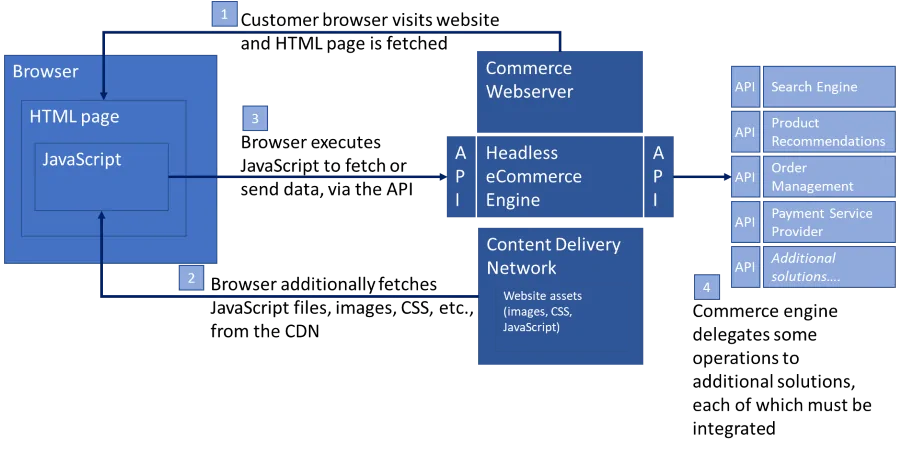Headless Commerce in 200 words & 1 diagram
What is Headless Commerce?
Headless Commerce is an approach to implementing ecommerce software without dictating the screens through which the customer will interact with the store.
A Headless Commerce application provides a library of ecommerce functionality through a set of APIs, which are called by the ecommerce website, a mobile App, voice assistant, wearable technology or other smart device. The Headless Commerce engine itself has no user interface.

In the above diagram:
- A customer visits the ecommerce website using a browser, a page is retrieved from the web server.
- The web page contains references to components such as images, stylesheets, and JavaScript files, which the browser downloads from a Content Delivery Network (CDN).
- As the visitor interacts with the page, the browser executes JavaScript files to fetch data from, or to send data to, the ecommerce engine via its APIs. For example, when a customer clicks on a product, stock availability is fetched.
- The headless commerce engine integrates with other systems such as a search engine to build a list of products that match a customer's search query.
The web pages can be built using any technology, completely independently from the headless commerce engine.
